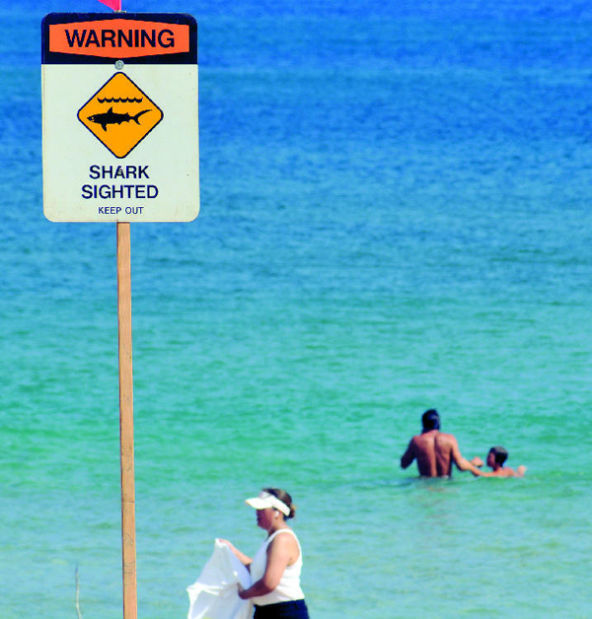LIHUE — The Department of Land and Natural Resources is initiating a study of tiger shark movements in island waters, according to a release Tuesday. “DLNR is paying close attention to the recent series of shark incidents statewide,” said William
LIHUE — The Department of Land and Natural Resources is initiating a study of tiger shark movements in island waters, according to a release Tuesday.
“DLNR is paying close attention to the recent series of shark incidents statewide,” said William Aila, DLNR chairperson. “These appear to be random events involving sharks of different species and different sizes. There’s nothing we can yet discern that connects the incidents or provides any sort of explanation.”
There have been eight incidents statewide this year, including four in the last month. Four of those occurred on Maui, three on the Big Island and one on Oahu.
Last week, Jana Lutteropp, a 20-year old German visitor, was snorkeling about 50 yards offshore near Makena, Maui, when she lost her right arm in a shark attack. She died Wednesday from her injuries.
“We are deeply saddened to learn of Ms. Jana Lutteropp’s passing today,” Aila wrote in a statement Wednesday afternoon. “We join with Hawaii’s people to extend our deepest sympathy to her family and friends.”
In 2012, there were 10 confirmed, unprovoked shark incidents, the highest number ever recorded, according to the DLNR release. Six of those incidents occurred on Maui.
At the time, Aila convened a meeting of shark experts and public safety personnel — similar to the Shark Task Force of the 1990s that guided shark management decisions.
During last year’s meeting, Aila asked University of Hawaii researchers to submit a proposal to specifically study tiger shark movements around Maui that would analyze how their behavior compares with known movement patterns around the other Main Hawaiian Islands.
The results will help determine whether any management options should be considered.
The study, led by Carl Meyer, will begin next month at a cost of $186,000 over two years.
“As we look at numbers of incidents per year over the last two decades or so, we see a lot of variation from year to year, including years with no incidents or just one incident,” Aila said in the release. “Recently, there’s been an average of about three or four incidents per year. But, every few years, there’s a little spike and we’ve now seen an unprecedented spike.”
These spikes in activity are occurring worldwide.
In recent years, West Australia, Reunion Island, Egypt, Brazil and other locations have seen their own versions of increased shark incident activity — many of which were fatal. In some cases, human behavior — such as introduction of shark attractants into the water — has been considered a contributing factor.
In other cases, no change in environmental conditions or other possible factors could be identified.
“Historically, October through December are the months when the rate of shark incidents increase,” Aila said.
“This is part of traditional Hawaiian knowledge, reinforced by our own statistics. So we urge people to be extra cautious, and follow our suggestions for reducing the chances of being bit.”


